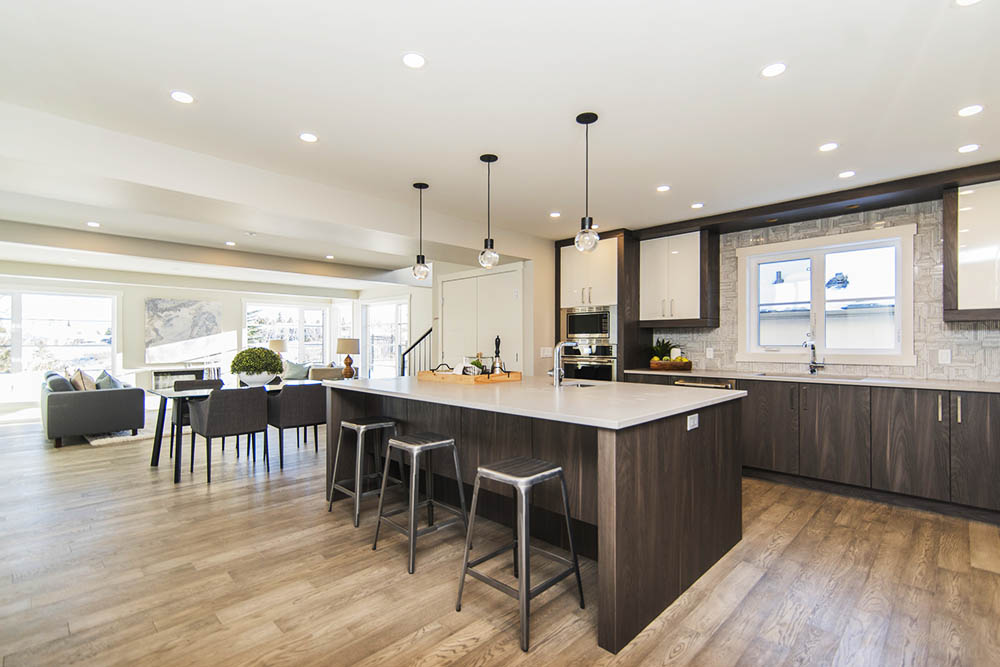The Power of Architecture
Architecture is an art form that inspires and transforms the lives of those who experience it. It is the creation of spaces that encompass beauty, functionality, and purpose. In this article, we will explore why architecture matters and its transformative power when designing spaces.
Creating Value with Architecture
Architecture has the power to create a sense of community and add value to people’s lives. A well-designed space can enhance the quality of life for those who use it, providing a better experience, and even creating healthier environments.
One example of architecture’s transformative power is the High Line in New York. This elevated park was created on a disused railway line in Manhattan’s West side, transforming it into a public park that provided a new experience of the city. The park’s design makes it an attraction for visitors, with a mix of greenery, public art, and unique panoramas of the city.
The High Line created value not just for visitors but for the surrounding community, as it became a gentrification engine, inspiring the revitalization of buildings and businesses around it. Architecture doesn’t just create buildings; it creates value and influences how people experience the world around them.
Architecture’s Aesthetic Value
Architecture is often perceived as an art form that creates aesthetically pleasing spaces. It’s true that beautiful spaces can enrich our lives and inspire us. For example, Frank Lloyd Wright’s Fallingwater house in Pennsylvania is a prime example of architecture’s aesthetic value. It offers a unique blend of the natural world and the human-made environment, with a stunning waterfall in the center of the house.
When they are well-designed, spaces can be experienced not just visually but also through our senses. The shape, texture, and sound of a building can elicit sensations that create a memorable experience. A good architect understands that people’s experiences of a space extend beyond visual pleasure, and the design should aim to create multi-sensory experiences.
Architecture’s Impact on Public Spaces
Architecture’s transformative power is best demonstrated in public spaces, where it has the potential to shape cities, cultures, and democracy. The design of public places impacts how people interact and engage with others, influencing community values and social behavior.
One of the most compelling examples of architecture’s impact on public spaces is New York’s Times Square redesign, completed in 2016. The redesign transformed the traffic-heavy area with pedestrian plazas, bicycle lanes, and dedicated public space. It created a welcoming space for visitors from diverse cultures, reflecting the city’s values of inclusiveness and diversity.
The redesign reflects urban planning principles and shows how architecture can create spaces that reflect a community’s values. Good architecture should be democratic, inclusive, and show respect for the environment.
Architecture for Health and Well-being
Healthcare architecture is an exciting and growing field, aiming to create spaces that support healthcare delivery and promote health and well-being. A good healthcare building should reflect the needs and values of its users and provide environments that promote healing.
An example of healthcare architecture is The Maggie’s Centre in Gartnavel, Glasgow, Scotland. The building was designed to provide emotional and physical support to people undergoing cancer treatment, with a warm, welcoming environment that offers peace and tranquility.
The Maggie’s Centre’s design has been credited with helping to reduce patients’ anxiety and stress, creating a supportive environment for them to heal. Healthcare architecture shows how good design can support and enhance the delivery of healthcare services.
Architecture for Sustainability and the Environment
Architecture’s transformative power can also be seen in the environmental impact of buildings. Today, buildings are responsible for 40% of global CO2 emissions, making sustainable design essential.
Sustainable design should not only meet our needs; it should also be environmentally responsible, aiming for net-zero carbon emissions, energy efficiency, and low environmental impact.
An example of sustainable design is the Bullitt Center in Seattle, Washington, which uses materials that are recycled, biodegradable, and toxic-free. The design incorporates passive ventilation and natural daylight, reducing energy consumption and operating costs.
The building’s design has been successful in achieving net-zero energy use and sustainability goals while creating an attractive space that reflects the community’s values. Examples like the Bullitt Center show how sustainable architecture can reduce the environmental impact of buildings while creating spaces that benefit both the community and the planet.
Conclusion
Architecture is a powerful art form that has the potential to inspire, transform and enrich our lives. Through its aesthetic value, it enriches our visual experience, creating multi-sensory experiences that transform our lives. It also impacts the public spaces where we interact and engage with others, creating inclusive, democratic spaces that reflect our cultural values.
Architecture has an increasing role in supporting healthcare delivery, reflecting the needs and values of its users, and creating environments that support health and well-being. Architecture also has a role in addressing the environmental impact of buildings, creating low carbon, sustainable buildings that reduce their impact on the planet.
Good design creates value and can influence how we experience the world around us. Whether through beauty, functionality, or sustainability, architecture will always have a transformative power that will continue to inspire and transform our lives.
